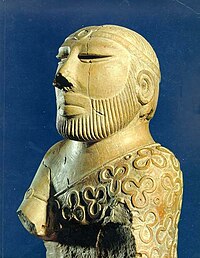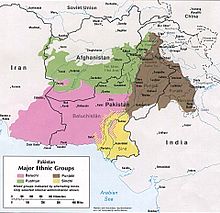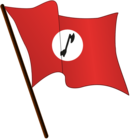| Revision as of 20:41, 14 June 2021 editHydrogenation (talk | contribs)Extended confirmed users6,490 edits Reverting edit(s) by 108.48.151.135 (talk) to rev. 1027914748 by RahulRamchandani: per WP:NPOV (RW 16.1)Tags: RW Undo← Previous edit | Revision as of 04:06, 18 June 2021 edit undoWikiman2021language (talk | contribs)105 editsNo edit summaryNext edit → | ||
| Line 28: | Line 28: | ||
| | region8 = {{flag|Indonesia}} | | region8 = {{flag|Indonesia}} | ||
| | pop8 = 10,000 | | pop8 = 10,000 | ||
| | region9 = {{flag|Afghanistan}} | |||
| | pop9 = 10,711 | |||
| | ref8 = {{citation needed|date=May 2019}} | | ref8 = {{citation needed|date=May 2019}} | ||
| | |
| region10 = {{flag|United States}} | ||
| | |
| pop10 = 9,805 | ||
| | ref9 = {{citation needed|date=June 2019}} | | ref9 = {{citation needed|date=June 2019}} | ||
| | |
| region11 = {{flag|Singapore}} | ||
| | |
| pop11 = 8,800 | ||
| | ref10 = {{citation needed|date=June 2019}} | | ref10 = {{citation needed|date=June 2019}} | ||
| | |
| region12 = {{flag|Hong Kong}} | ||
| | |
| pop12 = 25000 | ||
| | ref11 = <ref>{{cite web|url=https://books.google.com/books?id=39lJz_L4MdUC|title=Rising India and Indian Communities in East Asia|first1=K.|last1=Kesavapany|first2=A.|last2=Mani|first3=P.|last3=Ramasamy|date=1 January 2008|publisher=Institute of Southeast Asian Studies|via=Google Books}}</ref> | | ref11 = <ref>{{cite web|url=https://books.google.com/books?id=39lJz_L4MdUC|title=Rising India and Indian Communities in East Asia|first1=K.|last1=Kesavapany|first2=A.|last2=Mani|first3=P.|last3=Ramasamy|date=1 January 2008|publisher=Institute of Southeast Asian Studies|via=Google Books}}</ref> | ||
| | |
| region13 = {{flag|Oman}} | ||
| | |
| pop13 = 700 | ||
| | ref12 = {{citation needed|date=June 2019}} | | ref12 = {{citation needed|date=June 2019}} | ||
| | |
| region14 = {{flag|Gibraltar}} | ||
| | |
| pop14 = 500 | ||
| | ref13 = {{citation needed|date=May 2020}} | | ref13 = {{citation needed|date=May 2020}} | ||
| | languages = ]<br />{{smaller|], ], ] (]/] as ]) and numerous other languages widely spoken within the ]}} | | languages = ]<br />{{smaller|], ], ] (]/] as ]) and numerous other languages widely spoken within the ]}} | ||
Revision as of 04:06, 18 June 2021
Ethnolinguistic group native to Sindh, Pakistan "Sindhi people" redirects here. Not to be confused with the Sindi people.| This article needs additional citations for verification. Please help improve this article by adding citations to reliable sources. Unsourced material may be challenged and removed. Find sources: "Sindhis" – news · newspapers · books · scholar · JSTOR (February 2020) (Learn how and when to remove this message) |
Ethnic group
| سنڌي, सिन्धी, | |
|---|---|
| Total population | |
| c. 40 million | |
| Regions with significant populations | |
| 32,923,590 | |
| 3,810,000 | |
| 341,000 | |
| 30,500 | |
| 30,000 | |
| 11,500 | |
| 10,000 | |
| 10,711 | |
| 9,805 | |
| 8,800 | |
| 25000 | |
| 700 | |
| 500 | |
| Languages | |
| Sindhi English, Hindi, Urdu (Arabic/Sanskrit as liturgical languages) and numerous other languages widely spoken within the Sindhi diaspora | |
| Religion | |
| Majority: Minority: | |
| Related ethnic groups | |
| Other Indo-Aryan peoples | |
Sindhis (Template:Lang-sd (Perso-Arabic), सिन्धी (Devanagari), ![]() (Khudabadi)) are an Indo-Aryan ethnic group who speak the Sindhi language and are native to the Sindh region, in modern-day Pakistan. After the partition of India in 1947, most Sindhi Hindus and Sindhi Sikhs had to migrate to the newly independent Dominion of India and other parts of the world in order to escape religious persecution. Today, ethnic Sindhis are found predominantly in Pakistan while a minority resides in India.
(Khudabadi)) are an Indo-Aryan ethnic group who speak the Sindhi language and are native to the Sindh region, in modern-day Pakistan. After the partition of India in 1947, most Sindhi Hindus and Sindhi Sikhs had to migrate to the newly independent Dominion of India and other parts of the world in order to escape religious persecution. Today, ethnic Sindhis are found predominantly in Pakistan while a minority resides in India.
History
Pre-historic period

The Indus Valley Civilisation went into decline around the year 1700 BC for reasons that are not entirely known, though its downfall was probably precipitated by an earthquake or natural event that dried up the Ghaggar River. The Indo-Aryans are believed to have founded the Vedic civilisation that existed between the Sarasvati River and Ganges river around 1500 BC. This civilisation helped shape subsequent cultures in South Asia.
Historical period
For several centuries in the first millennium B.C. and in the first five centuries of the first millennium A.D., western portions of Sindh, the regions on the western flank of the Indus river, were intermittently under Persian, Greek, and Kushan rule, first during the Achaemenid dynasty (500–300 BC) during which it made up part of the easternmost satrapies, then, by Alexander the Great, followed by the Indo-Greeks, and still later under the Indo-Sassanids, as well as Kushans, before the Islamic invasions between the 7th–10th century AD. Alexander the Great marched through Punjab and Sindh, down the Indus river, after his conquest of the Persian Empire.
The Ror dynasty was a power from the Indian subcontinent that ruled modern-day Sindh and northwest India from 450 BC – 489 AD.
Sindh was one of the earliest regions to be conquered by the Arabs and influenced by Islam after 720 AD. Before this period, it was heavily Hindu, and Buddhist. After 632 AD, it was part of the Islamic empires of the Abbasids and Umayyids. Habbari, Soomra, Samma, Arghun dynasties ruled Sindh.
Ethnicity and religion
| Part of a series on |
| Sindhis |
|---|
 |
| Identity |
| History |
|
DiasporaAsia
Europe North America Oceania |
| Culture |
| Regions |
 Sindh portal |


The two main and highest-ranked tribes of Sindh are the Soomro — descendants of the Soomro Dynasty, who ruled Sindh during 970–1351 A.D. — and the Samma — descendants of the Samma Dynasty, who ruled Sindh during 1351–1521 A.D. These tribes belong to the same bloodline. Among other Sindhi Rajputs are the , Bhuttos, Kambohs, Bhattis, Bhanbhros, Mahendros, Buriros,Bhachos, Chohans, Lakha, Sahetas, Lohanas, Mohano, Dahars, Indhar, Chachar, Dhareja, Rathores, Dakhan, Langah,Junejo, Mahars etc. The Sindhi-Sipahi of Rajasthan and the Sandhai Muslims of Gujarat are communities of Sindhi Rajputs settled in India. Closely related to the Sindhi Rajputs are the Jats of Sindh, who are found mainly in the Indus delta region. However, tribes are of little importance in Sindh as compared to in Punjab and Balochistan. Identity in Sindh is mostly based on a common ethnicity.
Sindhi Muslims

The connection between the Indus Valley and Islam was established by the initial Muslim missions. According to Derryl N. Maclean, a link between Sindh and Muslims during the Caliphate of Ali can be traced to Hakim ibn Jabalah al-Abdi, a companion of the Islamic Prophet Muhammad, who traveled across Sind to Makran in the year 649AD and presented a report on the area to the Caliph. He supported Ali, and died in the Battle of the Camel alongside Sindhi Jats. He was also a poet and few couplets of his poem in praise of Ali ibn Abu Talib have survived, as reported in Chachnama:
(Template:Lang-ar "Oh Ali, owing to your alliance (with the prophet) you are true of high birth, and your example is great, and you are wise and excellent, and your advent has made your age an age of generosity and kindness and brotherly love".
During the reign of Ali, many Jats came under the influence of Islam. Harith ibn Murrah Al-abdi and Sayfi ibn Fil' al-Shaybani, both officers of Ali's army, attacked Sindhi bandits and chased them to Al-Qiqan (present-day Quetta) in the year 658. Sayfi was one of the seven partisans of Ali who were beheaded alongside Hujr ibn Adi al-Kindi in 660AD, near Damascus.
In 712 A.D., Sindh was incorporated into the Caliphate, the Islamic Empire, and became the ‘Arabian gateway’ into India (later to become known as Bab-ul-Islam, the gate of Islam).
Sindh produced many Muslim scholars early on, "men whose influence extended to Iraq where the people thought highly of their learning", in particular in hadith, with the likes of poet Abu al- 'Ata Sindhi (d. 159) or hadith and fiqh scholar Abu Mashar Sindhi (d. 160), among many others, and they're also those who translated scientific texts from Sanskrit into Arabic, for instance, the Zij al-Sindhind in astronomy.
The majority of Muslim Sindhis follow the Sunni Hanafi fiqh with a minority being Shia Ithna 'ashariyah. Sufism has left a deep impact on Sindhi Muslims and this is visible through the numerous Sufi shrines which dot the landscape of Sindh.
Sindhi Muslim culture is highly influenced by Sufi doctrines and principles. Some of the popular cultural icons are Shah Abdul Latif Bhitai, Lal Shahbaz Qalandar, Jhulelal and Sachal Sarmast.
- Grand mausoleum of Shah Abdul Latif Bhittai built by Mian Ghulam Shah Kalhoro on 1762. Grand mausoleum of Shah Abdul Latif Bhittai built by Mian Ghulam Shah Kalhoro on 1762.
-
 Interior of the Shah Jahan Mosque, Thatta, built during the rule of the Mughal Empire.
Interior of the Shah Jahan Mosque, Thatta, built during the rule of the Mughal Empire.
-
 Abdul-Majid Bhurgri is pioneer of Sindhi Computing
Abdul-Majid Bhurgri is pioneer of Sindhi Computing
Sindhi Hindus
Main articles: Sindhi Hindus, Hinduism in Sindh Province, and Sindhis in IndiaHinduism along with Buddhism was the predominant religion in Sindh before the Arab Islamic conquest. The Chinese Buddhist monk Xuanzang, who visited the region in the years 630-644, said that Buddhism dominated, but also noted that it was declining. While Buddhism declined and ultimately disappeared after Arab conquest mainly due to conversion of almost entire Buddhist population to Islam, Hinduism managed to survive through the Muslim rule until before the partition of India as a significant minority. Derryl Maclean explains what he calls "the persistence of Hinduism" on the basis of "the radical dissimilarity between the socio-economic bases of Hinduism and Buddhism in Sind" : Buddhism in this region was mainly urban and mercantile while Hinduism was rural and non-mercantile, thus the Arabs, themselves urban and mercantile, attracted and converted the Buddhist classes, but for the rural and non-mercantile parts, only interested by the taxes, they promoted a more decentralized authority and appointed Brahmins for the task, who often just continued the roles they had in the previous Hindu rule.
According to the 1998 census of Pakistan, Hindus constituted about 8% of the total population of Sindh province. Most of them live in urban areas such as Karachi, Hyderabad, Sukkur and Mirpur Khas. Hyderabad is the largest centre of Sindhi Hindus in Pakistan, with 100,000–150,000 living there. The ratio of Hindus was higher before the independence of Pakistan in 1947.
Before 1947 however, other than a few Gujarati speaking Parsees (Zorastrians) living in Karachi, virtually all the inhabitants were Sindhis, whether Muslim or Hindu at the time of Pakistan's independence, 75% of the population were Muslims and almost all the remaining 25% were Hindus.
Hindus in Sindh were concentrated in the cities before the creation of Pakistan in 1947, during which many migrated to India according to Ahmad Hassan Dani. Hindus were also spread over Sindh province. Thari (a dialect of Sindhi) is spoken in Sindh in Pakistan and Rajasthan in India.
The Cities and towns of Sindh were dominated by the Hindus. In 1941, for example, Hindus were 64% of the total urban population.
Emigration
Main article: Sindhi diasporaThe Sindhi diaspora emigrated from India and Pakistan is significant. Emigration from the Sindh began before and after the 19th century, with many Sindhis settling in Europe, the United States and Canada with a large Sindhi population Middle Eastern states such as the United Arab Emirates and the Kingdom of Saudi Arabia.
Culture
Main articles: Sindhi poetry, Sindhi music, Sindhi literature, Sindhi cuisine, and Sindhi Cultural DaySee also
- Cheti Chand
- Nanakpanthi
- Guru Nanak Jayanti
- Sindhudesh
- Sindhi nationalism
- Sindhis in India
- List of Sindhi people
- Ulhasnagar
- Sindhi names
- Sindhi Pathan
- Sindhi Baloch
- Sindhi bhagat
- Sindhi Memon
- Sammat
- Sandhai Muslims
- Sindhi language media in Pakistan
- Sindhi-language media
- List of Sindhi-language newspapers
- Sindhi Language Authority
- Sindhi Adabi Board
- Sindhi Adabi Sangat
- Sindhi folk tales
- Sindhi folklore
- Sindhi music
- List of Sindhi singers
- Sindhi music videos
- Sindhi poetry
- Tomb paintings of Sindh
- List of Sindhi festivals
- Sindhi culture
- Sindhi biryani
- Sindhi Camp
- Sindhi cap
- Sindhi Cultural Day
- Sindhi cinema
- Sindhi colony
- Sindhi cuisine
- Sindhi High School, Hebbal
- Romanisation of Sindhi
- Sindhi cuisine
References
- CCI to consider releasing census results without 5pc audit Dawn News.
- "Scheduled Languages in descending order of speaker's strength – 2011" (PDF). Registrar General and Census Commissioner of India. 29 June 2018.
- Kesavapany, K.; Mani, A.; Ramasamy, P. (1 January 2008). "Rising India and Indian Communities in East Asia". Institute of Southeast Asian Studies – via Google Books.
- "Kashmiri: A language of India". Ethnologue. Retrieved 2 June 2007.
- Kessler, P L. "Kingdoms of South Asia – Kingdoms of the Indus / Sindh". www.historyfiles.co.uk. Retrieved 15 February 2018.
- Nicholas F. Gier, FROM MONGOLS TO MUGHALS: RELIGIOUS VIOLENCE IN INDIA 9TH-18TH CENTURIES, presented at the Pacific Northwest Regional Meeting American Academy of Religion, Gonzaga University, May 2006
- The People and the land of Sindh Archived 14 February 2011 at WebCite
- M. Ishaq, "Hakim Bin Jabala - An Heroic Personality of Early Islam", Journal of the Pakistan Historical Society, pp. 145-50, (April 1955).
- Derryl N. Maclean," Religion and Society in Arab Sind", p. 126, BRILL, (1989) ISBN 90-04-08551-3.
- Mirza Kalichbeg Fredunbeg, "The Chachnama", p. 43, The Commissioner's Press, Karachi (1900).
- Ibn Athir, Vol. 3, pp. 45–46, 381, as cited in: S. A. N. Rezavi, "The Shia Muslims", in History of Science, Philosophy and Culture in Indian Civilization, Vol. 2, Part. 2: "Religious Movements and Institutions in Medieval India", Chapter 13, Oxford University Press (2006).
- Ibn Sa'd, 8:346. The raid is noted by Baâdhurî, "fatooh al-Baldan" p. 432, and Ibn Khayyât, Ta'rîkh, 1:173, 183–84, as cited in: Derryl N. Maclean," Religion and Society in Arab Sind", p. 126, BRILL, (1989) ISBN 90-04-08551-3.
- Tabarî, 2:129, 143, 147, as cited in: Derryl N. Maclean," Religion and Society in Arab Sind", p. 126, Brill, (1989) ISBN 90-04-08551-3.
- Mazheruddin Siddiqui, "Muslim culture in Pakistan and India" in Kenneth W. Morgan, Islam, the Straight Path: Islam Interpreted by Muslims, Motilal Banarsidass Publ., 1987, p. 299
- Ahmed Abdulla, The historical background of Pakistan and its people, Tanzeem Publishers, 1973, p. 109
- Ansari, Sarah FD. Sufi saints and state power: the pirs of Sind, 1843–1947. No. 50. Cambridge University Press, 1992.
- ^ MacLean, Derryl L. (1989). Religion and Society in Arab Sind. BRILL. pp. 12–14, 77–78. ISBN 978-90-040-8551-0.
- Shu Hikosaka, G. John Samuel, Can̲ārttanam Pārttacārati (ed.), Buddhist themes in modern Indian literature, Inst. of Asian Studies, 1992, p. 268
- ^ "Pakistan Census Data" (PDF).
- "Partition and the 'other' Sindhi".
- The foreign policy of Pakistan: ethnic impacts on diplomacy, 1971–1994, by Mehtab Ali Shah, published in 1997 by I B Tauris and Co Ltd, London PAGE 46
- Proceedings of the First Congress of Pakistan History & Culture held at the University of Islamabad, April 1973, Volume 1, University of Islamabad Press, 1975
Sources
- Bherumal Mahirchand Advani, "Amilan-jo-Ahwal" – published in Sindhi, 1919
- Amilan-jo-Ahwal (1919) – translated into English in 2016 ("A History of the Amils") at sindhis
External links
- SabSindhi-All About Sindhis, Music, Books, Magazines, People, Dictionary, Calendar, Keyboard
- Sindhi Sangat: promoting & preserving the Sindhi heritage, culture and language.
- Sindhi Jagat: All India Sindhi Consolidating Centre.
- Sindhi Surnames Origin – Trace your roots
- www.thesindhi.com
- www.worldsindhicongress.org
- Sindhi Association of North America
- Sindhi Association of Europe
| Ethnic groups in Pakistan | |||||||||||||||||
|---|---|---|---|---|---|---|---|---|---|---|---|---|---|---|---|---|---|
| |||||||||||||||||
| History | |
|---|---|
| Government and politics | |
| Culture |
|
| Geography | |
| Education | |
| Sports | |
| Flora & fauna | |
| Sindhi media | |
| Sindhi websites | |
| Sindh tourism | |
| Sindhi nationalism | ||
|---|---|---|
| Active since 1972 | ||
| Historical States of Sindh |  | |
| Historic figures |
| |
| Modern figures | ||
| Culture | ||
| Poets | ||
| Contemporary controversies | ||
| Battles and conflicts | ||
| Political parties | ||
| Student organizations | ||
| Militant Organizations | ||
| Non profit organizations | ||